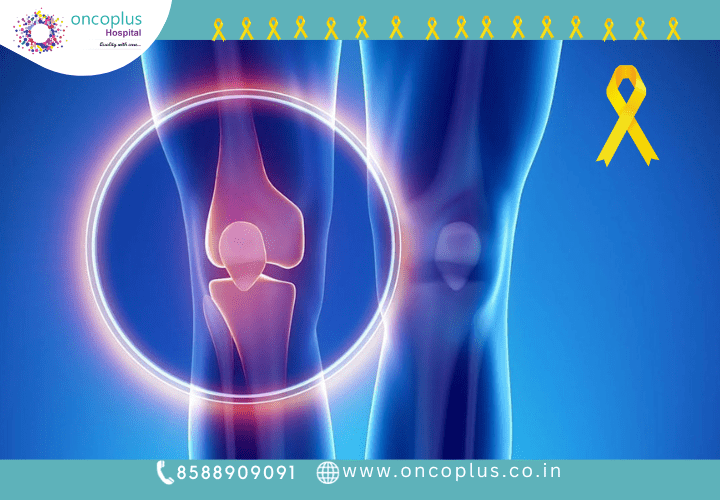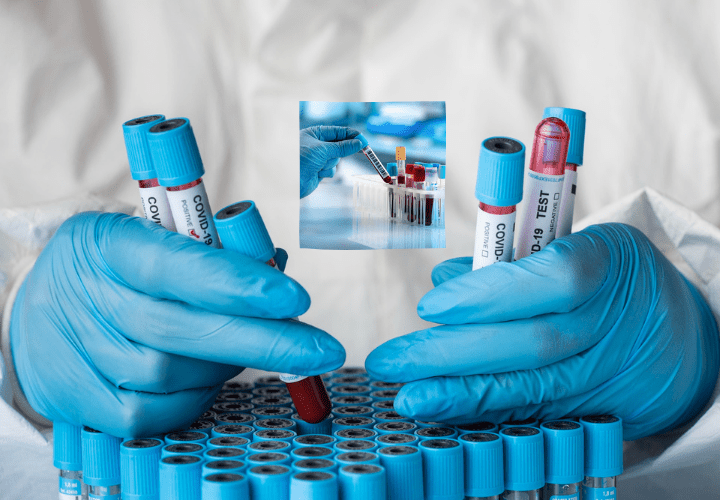What Does a Sarcoma Lump Look and Feel Like?

What Does a Sarcoma Lump Look and Feel Like?
- onco
- September 25, 2023
Sarcomas are less well-known in the world of cancer than more widespread varieties like breast or lung cancer. Sarcomas, on the other hand, are a class of malignancies that can impact the body’s many tissues, including the bones, muscles, and connective tissues. If you wish to have your regular check-up or treatment for Sarcoma Cancer, you should consult with Oncoplus. We provide expert Sarcoma treatment in Delhi and are known for cancer specialists, the world’s best and most renowned Sarcoma treatment facility.The presence of a lump or tumour might be one of the first indications of sarcoma. But how does a lump caused by a sarcoma actually appear and feel? We will delve into the realm of sarcomas in this blog, looking at their traits and the value of early detection.
Understanding Sarcomas:
Let’s first establish what sarcomas are in order to comprehend better how a sarcoma lump feels and appears. Sarcomas are a rare form of cancer that develops in the body’s connective tissues. These tissues include blood vessels, fat, muscles, tendons, cartilage, and bones. Sarcomas can appear anywhere on the body, which makes it difficult to identify them in the early stages.
Let’s learn about some early detection of sarcoma here:
- The Appearance of a Sarcoma Lump:
The appearance of a lump or mass in the affected area is one of the telltale indicators of a sarcoma. The size, form, and appearance of these tumours can vary. The following are some essential qualities to consider:
- Size: Sarcoma lumps can range in size from tiny nodules the size of a pea to more pronounced masses.
- Texture: Depending on the type of tissue affected, the texture of a sarcoma lump might be soft and mushy or hard and bone.
- Surface: Some sarcoma lumps may be smooth, while others may have an uneven or lumpy surface.
- Colour: Changes in skin colour are often not linked to sarcoma tumours. Subcutaneous protrusions are how they frequently appear.
Remember that not all lumps are malignant and that numerous benign illnesses can also result in lumps. However, a medical professional should be consulted right once if an unexplained lump persists or increases.
Read More Blog : ETV6 Protein Could Be An Important Target For Ewing Sarcoma Treatment
- Pain and Discomfort:
In addition to the sarcoma lumps outward appearance, people with sarcomas may also experience pain or discomfort in the affected location. The discomfort may be continual or sporadic and range in intensity from mild to severe. While some people say they feel a deep, agonising ache, others may feel sharp or shooting sensations.
It’s critical to distinguish between typical aches and pains and the agony brought on by a sarcoma. It’s critical to see a doctor if a lump is present along with persistent, inexplicable pain.
- Changes Over Time:
Another factor making early detection so important is the fact that sarcoma tumours can change over time. These modifications could involve:
- Shape: The lump’s shape may deteriorate or vary in contour.
- Texture: The lump’s texture may change to be tougher or softer.
- Pain: The type or degree of the pain may change over time.
Do not be reluctant to seek medical advice from a professional for additional evaluation if you observe any of these changes in a lump or mass on your body.
- Location Matters:
The precise position of a sarcoma tumour can yield valuable information. Sarcomas can develop in a number of locations on the body, including:
- Extremities: Sarcomas in the arms or legs are relatively common in the extremities. They frequently feel like lumps in the muscle or under the skin.
- Trunk: Sarcomas in the torso or trunk may appear as deep lumps that are more difficult to spot.
- Head and Neck: Sarcomas in the head and neck area can present as visible or palpable lumps or masses.
- Retroperitoneum: Although retroperitoneal sarcomas are not always perceptible from the outside, they can nonetheless be painful or uncomfortable.
Early Detection and Diagnosis:
Early diagnosis of sarcomas is essential for more successful treatment. Do not put off getting medical help if you discover a lump or any of the related symptoms. To confirm the diagnosis, your healthcare professional will do a thorough evaluation that may involve imaging tests like X-rays, CT scans, or MRI scans.
Treatment Options:
Depending on the kind, location, and stage of the malignancy, sarcomas are often treated using a multidisciplinary approach that may include surgery, radiation therapy, and chemotherapy. Plans for treatment are customised for each individual’s unique circumstance because sarcomas can differ greatly.
In determination, sarcomas are an uncommon but deadly type of tumour that can affect a variety of bodily tissues. Sarcoma lumps can have a wide range of appearances and sensations, which makes early detection difficult. But knowing the essential traits of these lumps, keeping an eye out for changes over time, and getting a quick medical check-up can save a life. Keep in mind that not all lumps are dangerous, but when it comes to your health, it’s always better to err on the side of caution. For a complete assessment and diagnosis, speak with a healthcare provider if you are worried about a lump or encounter any related symptoms.
The keys to effectively managing sarcomas and increasing the likelihood of a satisfactory result include early identification and prompt treatment.Oncoplus is recognized as one of the best cancer hospitals in India. It is renowned for its top-notch oncology surgeons in Delhi, research, and holistic approach, including both conventional and cutting-edge cancer treatment options. Patients choose Oncoplus as their go-to cancer specialist hospital in Delhi because of our knowledgeable staff of cancer specialists.
Recent Posts
-
Managing Pregnancy with Chronic Lymphocytic Leukemia
April 30, 2024
-
Signs of Stomach Cancer: Diagnosis and Treatment
April 18, 2024





Leave a Reply